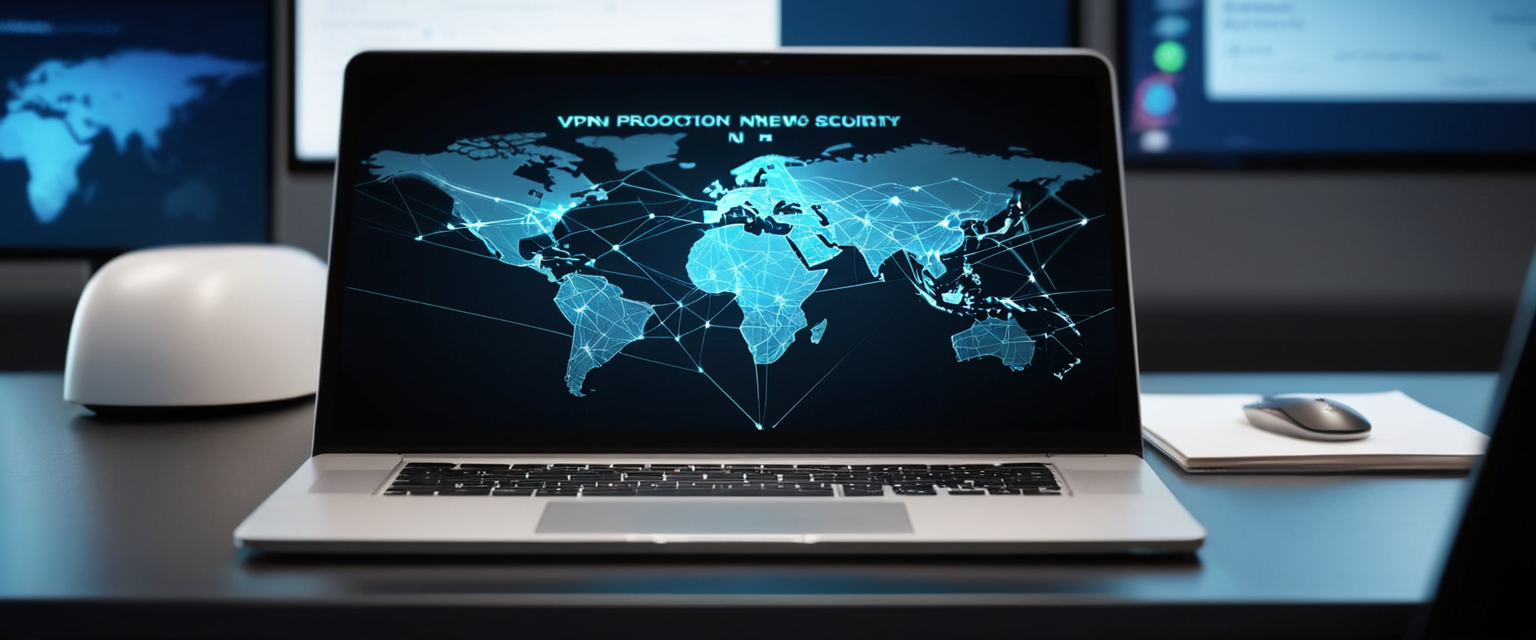
This report presents a thorough analysis of Virtual Private Network (VPN) configuration and implementation on Apple’s iPhone platform, encompassing setup methodologies, technical protocols, device management integration, security considerations, and practical troubleshooting. The iPhone’s native VPN support enables users to establish secure encrypted connections to private networks or remote VPN servers through both third-party applications and manual configuration profiles. Apple devices support multiple industry-standard VPN protocols including IKEv2/IPsec, L2TP/IPsec, OpenVPN, and WireGuard, providing flexibility for personal users and enterprise deployments. Modern iOS implementations include advanced features such as Always On VPN for enforced connectivity, Per-app VPN for granular application-level control, and VPN On Demand for automatic connection triggers. This report synthesizes current best practices, technical specifications, security implications, and step-by-step methodologies to provide a comprehensive resource for iPhone users seeking to understand and implement VPN technology on their devices.
Understanding Virtual Private Networks and iPhone Integration
Virtual Private Networks represent a foundational technology for secure digital communication, creating encrypted tunnels between user devices and VPN servers that protect data from interception and masking user identity from external observation. The iPhone’s architecture includes robust native support for VPN technologies, reflecting Apple’s commitment to providing secure networking capabilities across its ecosystem. Unlike Android platforms that offer broader extensibility, iPhone’s VPN implementation operates within Apple’s carefully controlled environment, ensuring compatibility with iOS security architecture while maintaining performance optimization across the device. The VPN functionality on iPhone serves multiple purposes ranging from personal privacy enhancement on public wireless networks to enterprise security for organizational data access and remote workforce enablement.
Apple’s approach to VPN integration distinguishes itself through simplicity and security-by-design philosophy. The operating system prevents users from modifying VPN settings beyond the parameters established by configuration profiles, ensuring that once VPN policies are deployed, they cannot be inadvertently circumvented through careless configuration changes. This architectural choice reflects Apple’s broader security model emphasizing restriction of user permissions to enhance overall system security. Consequently, VPN management on iPhone requires understanding both the technical protocols available and the user interface mechanisms through which they are accessed and controlled.
The importance of VPN technology on iPhone extends beyond mere privacy concerns. Public Wi-Fi networks, prevalent in coffee shops, airports, hotels, and other commercial establishments, transmit user data without encryption, leaving credentials, financial information, and sensitive communications vulnerable to interception by anyone sharing the network connection. Network analysis tools, colloquially known as packet sniffers, enable attackers to observe unencrypted traffic including login credentials, personal information, and confidential communications. Additionally, certain corporate environments and geographic locations implement content filtering or censorship that VPN technology can circumvent, while some streaming services restrict content access based on geographic location, which VPN services can mask through server selection in appropriate jurisdictions.
Setting Up VPNs Through Third-Party Applications
The most accessible and recommended method for iPhone users to establish VPN connectivity involves downloading and installing specialized VPN applications from Apple’s App Store. This approach eliminates the technical complexity of manual configuration while providing user-friendly interfaces for server selection, connection management, and feature control. The process begins with navigating to the App Store on the iPhone, searching for a desired VPN provider, and initiating the download process. Numerous VPN providers maintain official iOS applications, including established services like NordVPN, ExpressVPN, ProtonVPN, Surfshark, and emerging providers offering competitive pricing or specialized features.
Once a VPN application downloads completely, users launch the application and proceed through the account setup workflow, which typically involves creating credentials through the application interface or logging into existing accounts created through the provider’s website. Following authentication, most VPN applications display a simplified interface featuring a prominent connection button and server selection menus. Users typically select a geographic server location, with applications often defaulting to the server nearest to the user’s current physical location for optimal performance. Upon tapping the connect button, the application establishes an encrypted tunnel through the VPN provider’s infrastructure, at which point the iPhone will display a VPN status indicator in the system status bar confirming active connectivity.
The advantages of application-based VPN configuration extend beyond simplicity. Modern VPN applications incorporate advanced features unavailable through standard iOS settings, including kill switches that terminate internet access if VPN connectivity drops unexpectedly, protecting users from unintended data exposure. Many applications offer server switching capabilities allowing users to change their geographic location without disconnecting, split tunneling options that segregate which applications route through the VPN tunnel, and specialized obfuscation protocols designed to bypass network-level VPN detection and blocking. Additionally, VPN applications maintain automatic updates from developers, ensuring users benefit from security improvements and feature enhancements without manual intervention.
Manual VPN Configuration Through iOS Settings
For users requiring connection to specific corporate networks or possessing custom VPN configurations not provided through commercial applications, iOS offers the capability to manually configure VPN settings directly through the device settings interface. This methodology requires obtaining specific configuration parameters from the VPN provider or network administrator, including the VPN server address, remote identification values, and authentication credentials. The manual configuration process begins by accessing the Settings application on the iPhone, navigating to General, then selecting “VPN & Device Management” on newer iOS versions or simply “VPN” on earlier releases.
Within the VPN configuration menu, users locate and tap the “Add VPN Configuration” option, which presents a dropdown menu requesting selection of the VPN protocol type. This selection represents a critical decision point, as the appropriate protocol depends on the VPN provider’s infrastructure. For most modern implementations, IKEv2 represents an optimal choice for iPhone users due to its native iOS support, rapid reconnection capabilities when switching between Wi-Fi and cellular networks, and strong security characteristics. After protocol selection, users fill in required fields including the connection description (a user-visible label), the server hostname or IP address, the remote identifier matching the VPN server certificate identity, and authentication credentials. Depending on the protocol and provider configuration, additional fields may include local identifiers, pre-shared keys, or certificate selections.
The authentication mechanism varies based on protocol and organizational configuration. For IKEv2 implementations, users typically select between password-based authentication requiring username and password entry, or certificate-based authentication requiring installation of client certificates on the device. Certificate-based authentication generally provides stronger security but requires more complex provisioning steps involving certificate file distribution and installation. Users complete the manual configuration process by tapping “Done,” at which point the VPN profile installs and becomes available for activation. To connect to the manually configured VPN, users return to Settings, select the VPN entry, and toggle the connection switch to the enabled position, initiating the tunnel establishment process. An icon appearing in the system status bar confirms successful connection establishment.
Comprehensive Analysis of VPN Protocols for iPhone
Apple devices support multiple VPN protocols, each presenting distinct characteristics regarding security architecture, performance characteristics, and use case appropriateness. Understanding protocol differences enables users to make informed selections when configuring VPN connections, optimizing the balance between security, performance, and compatibility with their specific usage requirements.
IKEv2/IPsec Protocol Characteristics and Implementation
IKEv2, standardized in RFC 7296 and developed as a collaborative effort between Cisco and Microsoft, represents one of the most versatile and widely implemented VPN protocols for iPhone users. The protocol pairs with IPsec for encryption and authentication, creating a comprehensive security framework. IKEv2 distinguishes itself through support for both IPv4 and IPv6 network protocols, rapid reconnection capabilities particularly valuable for mobile users, and authentication methods accommodating shared secrets, RSA certificates, ECDSA certificates, and EAP authentication methods. The protocol’s MOBIKE (Mobility and Multihoming Protocol Extension) capability enables devices to maintain VPN connectivity while transitioning between network interfaces, such as when moving from Wi-Fi to cellular connectivity or vice versa.
From a security perspective, IKEv2/IPsec implementations employ contemporary encryption standards with Suite B cryptography support including ECDSA certificates and ESP encryption with Galois/Counter Mode (GCM) for authenticated encryption. The Diffie-Hellman key exchange mechanism ensures that even if network traffic monitoring occurs, the session encryption keys remain secure and cannot be retroactively decrypted. Performance testing demonstrates that IKEv2 maintains moderate to good speeds on iPhone devices, with typical throughput ranging from 80-120 Mbps in testing conditions, though actual performance varies based on VPN server capacity, network conditions, and device hardware.
IKEv2 configuration on iOS can occur through both manual configuration in Settings and VPN applications, providing flexibility for both enterprise deployments and consumer use cases. The protocol’s ease of setup through iOS native settings represents a significant advantage for users preferring not to install additional applications. However, IKEv2’s reliance on specific UDP ports (UDP 500 for initial key exchange and UDP 4500 for NAT traversal) means that networks employing sophisticated packet filtering may block the protocol, preventing connections in restricted environments.
Layer 2 Tunneling Protocol Over IPsec
L2TP, defined in RFC 3193 and standardized as Layer 2 Tunneling Protocol, partners with IPsec to provide VPN connectivity across iOS, iPadOS, and macOS platforms. The protocol implements double encapsulation of user data, with L2TP establishing the tunnel layer and IPsec providing encryption and authentication. This architecture delivers confidentiality, authentication, and data integrity protections. Authentication mechanisms for L2TP/IPsec on iOS include MS-CHAPv2 password authentication and machine authentication through shared secrets, with macOS implementations additionally supporting RSA SecurID and CRYPTOCard hardware tokens.
The performance characteristics of L2TP/IPsec present a notable limitation compared to more modern protocols. The double encapsulation requirement imposes computational overhead on encryption and decryption operations, resulting in reduced throughput. Performance testing indicates L2TP/IPsec typically achieves 40-70 Mbps on iPhone devices, substantially lower than IKEv2 alternatives, and the protocol demonstrates reduced battery efficiency due to increased processing demands. Additionally, L2TP/IPsec’s reliance on fixed protocol and port combinations (UDP 500, UDP 1701, UDP 4500) renders it more susceptible to network-level blocking by firewalls and filtering systems compared to protocols employing variable port selection.
Despite these limitations, L2TP/IPsec maintains deployment in corporate environments with legacy infrastructure and continues to represent a supported option on iOS devices through both manual configuration and selected VPN applications. The protocol remains viable for users whose primary VPN requirement involves accessing established corporate networks implementing L2TP/IPsec server infrastructure.
WireGuard and Modern Protocol Implementations
WireGuard represents a revolutionary advancement in VPN protocol design, distinguished by an exceptionally minimal codebase of approximately 4,000 lines compared to OpenVPN’s 100,000+ lines of code. This streamlined architecture derives from first-principles cryptographic design incorporating contemporary security concepts including ChaCha20 encryption, Poly1305 authentication, and curve25519 key exchange mechanisms. WireGuard’s remarkable innovation centers on delivering both exceptional speed and robust security through elegant protocol design rather than feature complexity.
Performance characteristics demonstrate WireGuard’s substantial advantages over legacy protocols. Testing conducted on iPhone devices reveals download speeds of 150-280 Mbps with WireGuard, substantially exceeding IKEv2 and dramatically surpassing L2TP/IPsec implementations. The protocol achieves these superior speeds while consuming minimal battery power through efficient cryptographic implementation and reduced computational overhead. WireGuard’s rapid connection establishment and quick reconnection capabilities when network interfaces transition prove particularly valuable for mobile users frequently switching between Wi-Fi and cellular networks.
On iPhone, WireGuard implementation occurs through specialized VPN applications, as the protocol is not natively supported through iOS Settings configuration. Several established VPN providers including NordVPN, ProtonVPN, and others have integrated WireGuard through applications submitted to the App Store, providing accessible interfaces for configuring WireGuard tunnels through QR code scanning or manual configuration file import. NordVPN’s implementation called NordLynx enhances WireGuard with additional privacy protections through double NAT (Network Address Translation) systems ensuring that user IP addresses remain invisible to VPN servers. The combination of WireGuard’s speed, modern cryptography, and enhanced privacy mechanisms positions it as the optimal protocol choice for most contemporary iPhone users prioritizing performance and security.
Alternative Protocol Support and Specialized Implementations
Beyond the primary protocols discussed above, iOS supports SSL-VPN implementations through provider-specific applications downloaded from the App Store, enabling use of custom VPN solutions developed by specialized providers. Cisco IPsec represents another protocol option available on macOS and certain iOS configurations, particularly in enterprise environments utilizing Cisco infrastructure. These alternative protocols accommodate diverse organizational requirements and specialized network environments where standard protocols prove insufficient.
Additionally, emerging anti-censorship protocols including Stealth (implemented by ProtonVPN) and V2Ray-based obfuscation mechanisms address scenarios where VPN protocols themselves face blocking through network analysis and detection. Stealth encapsulates VPN traffic within TLS sessions to resemble standard HTTPS traffic, evading detection systems in environments implementing sophisticated traffic analysis filtering. These specialized protocols prove valuable for users in countries employing advanced censorship systems or network environments with restrictive security policies prohibiting VPN usage.
Enterprise VPN Configurations and Device Management
Beyond consumer VPN applications, iOS supports sophisticated enterprise VPN capabilities enabling organizations to deploy VPN solutions at scale through Mobile Device Management (MDM) frameworks including Apple Business Manager, Apple School Manager, and third-party MDM solutions. These enterprise configurations implement VPN payloads that automatically deploy VPN settings to enrolled devices while preventing user modification of policy parameters, ensuring compliance with organizational security requirements.
Always On VPN for Enforced Connectivity
Always On VPN represents an enterprise-grade VPN capability available on iOS and visionOS devices enrolled in MDM solutions and supervised through Apple Configurator, Apple School Manager, or Apple Business Manager. Once an Always On VPN profile is installed on a device, the VPN tunnel automatically activates without user interaction and remains persistent across device restarts until the profile is uninstalled. This mechanism ensures continuous organizational network protection without relying on user vigilance to establish connections.
The technical implementation of Always On VPN couples tunnel establishment and teardown to network interface IP state transitions. When an interface gains IP network reachability, the device initiates tunnel establishment; when IP state becomes unavailable, the tunnel automatically terminates. For devices with cellular connections, Always On VPN establishes separate tunnels for each active IP interface, with one tunnel serving cellular connectivity and another serving Wi-Fi connections. The architecture routes all IP-based traffic through the VPN tunnels, including both traditional IP-routed traffic and IP-scoped traffic generated by first-party applications such as FaceTime and Messages. If VPN tunnels fail to establish, the device drops all IP traffic, preventing unencrypted data transmission outside the intended organizational tunnel.
Always On VPN activation requires device supervision, distinguishing it from consumer VPN capabilities available on unsupervised devices. Organizations implementing Always On VPN typically manage devices through Mobile Device Management frameworks, enabling centralized configuration, policy enforcement, and security monitoring across organizational device fleets. The policy supports application of optional filtering and monitoring treatments before forwarding traffic to its destination, enabling organizations to enforce content filtering, malware blocking, and activity logging policies within the VPN tunnel infrastructure.
Per-App VPN and Granular Traffic Control
Per-app VPN functionality enables organizations to define VPN connectivity requirements at individual application granularity, specifying which managed applications must route traffic through VPN tunnels and which may access networks directly. This sophisticated capability allows segregation of organizational traffic from personal device activity, enabling employees to access work applications through secure organizational tunnels while personal applications maintain direct internet connectivity. Mobile Device Management solutions specify which applications require VPN tunneling and which applications bypass VPN, with the specification occurring either through VPN configuration profiles or app installation commands providing VPN association parameters.
Technical implementation of per-app VPN on iOS requires MDM involvement for managed application designation and associated VPN configuration specification. Organizations configure per-app VPN through VPN profiles specifying certificate-based authentication and mandatory split tunneling with all organizational traffic routed through VPN. The granular control enables sophisticated deployment scenarios where different applications utilize entirely separate VPN connections, such as configurations routing sales quote applications through one data center VPN connection while accounts payable applications utilize a different organizational VPN connection.
An important limitation exists for per-app VPN implementation with IKEv2 VPN profiles on iOS/iPadOS. The Microsoft Intune documentation indicates that per-app VPN support specifically excludes IKEv2 VPN profile types for iOS/iPadOS devices, requiring alternative protocol selection such as third-party VPN solutions or custom VPN app integrations. This architectural constraint reflects technical limitations in iOS’s implementation of per-app traffic routing with IKEv2 connections.
VPN On Demand for Automatic Connection Triggering
VPN On Demand represents an intelligent VPN activation mechanism enabling iOS devices to automatically establish VPN connections based on network and domain-based conditions, eliminating the requirement for user intervention to initiate VPN connections when specific conditions exist. This capability particularly benefits organizations where users frequently access organizational resources requiring VPN connectivity but may not consistently remember to establish VPN connections.
VPN On Demand configuration utilizes OnDemandRules within VPN configuration profiles, specifying rules evaluated in two distinct stages. The network detection stage defines VPN requirements applied when the device’s primary network connection changes, enabling rules like “require VPN when unknown Wi-Fi networks are detected” or “do not require VPN when connected to the internal corporate Wi-Fi network.” The connection evaluation stage defines VPN requirements evaluated when connection requests target specific domain names, enabling rules including “start VPN when DNS request for internal.company.com fails” or “require VPN for all traffic to the company.com domain.” This two-stage architecture provides sophisticated flexibility for organizations seeking to automatically activate VPN connectivity only when necessary.
VPN On Demand requires certificate-based authentication because it activates without user interaction, precluding interactive password entry mechanisms. The implementation requires that organizations deploy appropriate client certificates to devices and configure VPN servers to authenticate based on certificate credentials rather than username/password combinations.
Device Management and VPN Payload Configuration
Organizations deploying VPNs at scale through Mobile Device Management frameworks configure VPN through standard payload structures defined by Apple’s management framework. The VPN payload, identified by the reverse DNS identifier com.apple.vpn.managed, supports deployment to iOS, iPadOS, macOS, tvOS, and visionOS devices through User Enrollment (restricted to app-layer and app-to-app VPN mapping), Device Enrollment, and Automated Device Enrollment methods. Multiple VPN payloads can be delivered to individual users or devices, enabling scenarios where different applications or use cases route through different VPN connections.
The VPN payload configuration table specifies essential fields including connection name, hostname/IP address, account name, authentication method, and optional parameters including shared secrets, persistent connection settings, VPN On Demand rules, proxy configurations, and split tunneling parameters. Device management administrators configure protocol-specific fields based on the selected VPN type, with IKEv2 configurations specifying local and remote identifiers, L2TP configurations defining pre-shared keys, and IPsec configurations specifying machine authentication parameters. Device management service developers implement VPN payload settings according to their specific platforms, such that MDM solution documentation provides authoritative guidance on specific configuration implementation details for individual platforms.

Selecting and Installing Appropriate VPN Applications
The VPN application ecosystem available through Apple’s App Store encompasses diverse options ranging from established, internationally recognized providers like NordVPN and ExpressVPN to emerging services and specialized implementations addressing specific use cases. Selection of an appropriate VPN application requires evaluation across multiple criteria including security architecture, privacy policies, performance characteristics, supported protocols, feature sets, pricing models, and trustworthiness indicators.
Evaluating VPN Provider Trustworthiness and Security
VPN provider trustworthiness represents a critical evaluation criterion, as VPN services operate in a position of significant access to user network traffic and device information. Reputable providers maintain publicly available privacy policies explicitly stating what information they collect, how they use collected information, whether they log user activity, and which third parties receive access to user information. Transparent privacy policies indicating collection of only essential operational information (such as non-identifying connection logs for network optimization) and explicit no-logging policies regarding user browsing history and accessed websites represent positive indicators. Vague privacy policies employing broad, undefined terminology or inconsistent logging claims warrant substantial skepticism.
Independent third-party security audits provide objective verification of VPN provider security claims and privacy policy compliance. Established providers including NordVPN, ProtonVPN, and others have subjected their logging policies and security implementations to independent audits by reputable firms such as Deloitte, PwC, and specialized cybersecurity auditing companies. Public availability of audit reports and positive audit results substantially increase provider credibility. Conversely, providers declining independent audits or claiming security expertise without independent verification warrant caution.
Provider jurisdiction and applicable legal frameworks significantly impact privacy protection capabilities. VPN providers headquartered in privacy-friendly jurisdictions including Switzerland, Iceland, Panama, and Netherlands benefit from data protection legal frameworks providing strong privacy rights and limiting government data disclosure requests. Providers operating in countries with mandatory data retention laws or active government surveillance programs present substantially elevated privacy risks regardless of claimed no-logging policies.
The business model through which VPN providers generate revenue provides important transparency regarding potential conflicts of interest. Providers generating revenue through direct subscription payments from users have business incentives aligned with protecting user privacy and maintaining service quality. Conversely, free VPN services generating revenue through user data monetization face fundamental misalignment between revenue optimization and user privacy protection. The established principle “if the product is free, you are the product” reflects the reality that free VPN services typically monetize user data through sale to advertisers, data brokers, and other third parties, fundamentally compromising privacy protections that constitute the VPN’s primary value proposition.
Performance and Protocol Support Evaluation
VPN performance significantly impacts user experience, particularly for activities including video streaming, real-time communication, and downloading large files. When evaluating VPN providers, examining reported speed test results, reading user reviews regarding practical performance in typical use scenarios, and evaluating protocol support provides valuable performance assessment. Providers supporting modern WireGuard protocol implementations or offering protocol selection enabling users to optimize protocol choice for their use case and network conditions typically deliver superior performance compared to providers limited to legacy protocols.
Server network size and geographic distribution impact performance and feature availability. Larger VPN networks with servers distributed globally enable users to select geographically appropriate servers minimizing latency and optimizing throughput, while providing access to content libraries geographically restricted to diverse regions. Providers maintaining thousands of servers across over 100 countries generally provide superior service geographic coverage compared to smaller networks.
Feature Evaluation and Advanced Capabilities
Modern VPN applications incorporate advanced features beyond basic tunnel encryption and traffic routing. Kill switch functionality represents a critical security feature automatically terminating internet access if VPN connectivity drops unexpectedly, preventing accidental exposure of unencrypted traffic. Split tunneling capabilities enable users to specify which applications route through VPN connections and which access networks directly, optimizing performance for applications intolerant of VPN latency while protecting sensitive applications through VPN encryption. Ad blocking and tracker blocking features provide additional privacy protections beyond VPN tunnel encryption. Specialized obfuscation protocols enable VPN usage in restrictive network environments employing VPN detection and blocking systems.
Verification and Testing of VPN Connections
Establishing a VPN connection requires subsequent verification that the connection functions correctly and provides intended protections. Multiple verification methodologies enable comprehensive assessment of VPN functionality and identification of potential technical issues or data leaks requiring resolution.
IP Address Verification and Leak Testing
The most fundamental VPN verification approach involves confirming that the user’s visible IP address changes from the user’s actual IP to the VPN server’s IP address. Users can perform this verification through IP lookup services accessible through web browsers. By first accessing an IP lookup service without VPN active, recording the displayed IP address and location information, subsequently connecting to VPN, and accessing the same service, users can confirm that the displayed IP address and location correspond to the VPN server rather than the user’s actual location. Significant discrepancies between expected VPN server locations and displayed locations indicate potential configuration issues requiring investigation.
DNS leak testing represents a critical verification component, as DNS queries can bypass VPN protection even when general internet traffic routes through the VPN tunnel. DNS leaks occur when DNS requests intended for the VPN provider’s private DNS servers instead route to the user’s ISP’s DNS servers, potentially revealing accessed websites to ISP monitoring systems and third-party DNS providers. Users can test for DNS leaks through specialized DNS leak testing services accessible through web browsers including dnsleaktest.com, which perform standard and extended DNS leak tests revealing which DNS servers handle DNS queries. Results indicating queries routed to ISP DNS servers or other non-VPN DNS servers indicate DNS leak vulnerabilities requiring resolution through VPN configuration adjustments or VPN provider support.
IPv6 leak testing identifies situations where IPv6 traffic bypasses VPN protection even when IPv4 traffic routes through the VPN tunnel. Most contemporary VPN services primarily support IPv4 addressing, and if devices have both IPv4 and IPv6 addresses assigned, operating systems may prefer IPv6 connectivity when available. If the VPN does not support or properly encrypt IPv6 traffic, DNS queries and other network communications may leak across IPv6 connections outside the VPN tunnel. Users with IPv6 addresses should verify through specialized testing that VPN implementations support IPv6 traffic, or alternatively disable IPv6 on devices through system settings to prevent unintended leaks.
Connection Status Verification and Activity Monitoring
iOS provides multiple mechanisms for verifying active VPN connections and monitoring VPN activity. The system status bar at the top of the iPhone display presents a small “VPN” indicator whenever an active VPN connection exists, providing continuous visible confirmation of VPN status. Users can access detailed VPN connection information by navigating to Settings, then General, then VPN & Device Management, where the interface displays the current connection status and selected VPN server location for configured VPN connections. VPN applications themselves typically display connection status, connection duration, data transferred statistics, and current server location within their user interfaces, providing granular connection information beyond iOS system settings.
Network activity testing through web-based applications and connection testing tools provides operational verification of VPN functionality. Opening a web browser while connected to VPN and accessing websites or online services confirms that applications can successfully utilize VPN connectivity to access internet resources. Accessing services with location-specific content restrictions enables verification that VPN connectivity provides location spoofing as intended. Performing these tests immediately after establishing VPN connections and periodically during usage provides confidence that VPN connectivity functions correctly throughout extended usage sessions.
Troubleshooting Common VPN Configuration Issues
VPN implementations sometimes encounter connectivity issues, performance degradation, or functionality problems requiring diagnostic investigation and corrective action. Understanding common problems and corresponding resolution approaches enables users to restore functionality or identify underlying infrastructure issues.
Connection Establishment Failures
When VPN connections fail to establish after user initiation, multiple underlying causes require investigation. The initial troubleshooting step involves confirming that the base network connection functions correctly by attempting to access websites or services without VPN enabled, establishing that internet connectivity exists. If base connectivity is absent, underlying network issues require resolution before VPN functionality can be addressed.
Subsequent troubleshooting involves cycling the VPN connection by toggling off the VPN in Settings, waiting several seconds, and toggling the connection back on, which often resolves transient connection issues related to temporary server unavailability or network state anomalies. If connection issues persist, users should verify that VPN application software is current by checking the App Store for available updates and installing any pending updates, as VPN developers frequently release updates addressing connectivity issues and improving compatibility.
Network configuration conflicts sometimes prevent VPN establishment. Users should examine Settings for any proxy configurations, firewall rules, or antivirus software that might interfere with VPN connections. Some users experience issues where changing network interfaces (transitioning from Wi-Fi to cellular networks, for example) causes connection disruption. In such situations, manually toggling the VPN off and back on can re-establish connectivity after network transitions. If connection issues persist after these basic troubleshooting steps, users should contact VPN provider technical support with specific information about connection failures, including error messages, affected network types, and affected VPN protocols.
Performance Degradation and Speed Optimization
VPN connections sometimes experience slower throughput than user expectations or than experienced without VPN protection. Multiple factors contribute to VPN-related speed reduction including VPN server load, physical distance between user location and VPN server, underlying network congestion, and device capability. Users should first attempt connecting to different VPN servers, preferentially selecting servers geographically closer to their actual location, which typically reduces network latency and improves throughput. Modern VPN applications enable one-click server switching without disconnecting, facilitating rapid experimentation with different servers.
Protocol selection significantly impacts performance on iPhone devices. If users experience poor performance with IKEv2 or L2TP/IPsec protocols, attempting WireGuard or other modern protocols through applications supporting multiple protocols often yields substantial performance improvements. Additionally, enabling split tunneling (if supported by the VPN application) to route only necessary traffic through the VPN tunnel while allowing other applications direct internet access reduces processing overhead and can improve performance for time-sensitive applications. If speed issues persist across multiple servers and protocols, the issue may reflect underlying network conditions or device capability limitations rather than VPN problems.
Battery Drain and Resource Consumption
VPN connections consume additional device resources through encryption processing, network traffic routing, and background connection maintenance, resulting in increased battery consumption compared to non-VPN connectivity. Testing indicates that VPN usage on iPhone increases battery drain by approximately 14-24% under typical usage conditions, a noticeable but generally acceptable increase for most users. The VPN drain results from encryption/decryption processing requiring CPU utilization, data routing requiring network interface activity, and continuous background connection maintenance.
Users experiencing excessive battery drain while using VPNs should verify that background app refresh settings do not enable excessive activity from VPN applications or other applications consuming resources during background operation. Disabling unnecessary background app refresh for non-critical applications reduces overall device resource consumption and improves battery life. Additionally, disconnecting VPN when not actively requiring protection reduces background resource consumption, particularly during periods when VPN protection provides minimal practical value such as overnight inactive periods.
Removing and Managing VPN Configurations
Users sometimes require removal of VPN configurations, either because they no longer need VPN connectivity, they intend to switch to alternative VPN solutions, or they experience issues with existing configurations. Proper removal prevents connection issues and ensures clean device state for subsequent VPN installations.
Removing VPN Applications and Associated Profiles
For VPN configurations installed through applications, the simplest removal approach involves locating the VPN application icon on the home screen, long-pressing the icon, selecting “Remove App” from the context menu, and confirming removal when prompted. This single-step process removes both the VPN application and automatically removes any associated VPN configuration profiles created by the application. In most cases, no additional manual profile removal is necessary.
If VPN profiles remain after application removal, particularly for enterprise configurations or manually configured connections, users can manually remove profiles by navigating to Settings, selecting General, then VPN & Device Management, locating the VPN profile entry, tapping the information icon next to the profile, and selecting “Delete VPN” from the confirmation options presented. An important cautionary note exists regarding the proper sequence for VPN removal: users should avoid deleting VPN profiles while the VPN connection is active and should always remove the VPN connection before deleting the profile to prevent abrupt tunnel termination that could leave the device in an inconsistent network state. If a VPN connection remains active when the profile is deleted, the device may experience temporary internet connectivity loss until network settings stabilize, requiring a device restart to fully restore connectivity.
For enterprise VPN configurations deployed through Mobile Device Management solutions, removal procedures depend on MDM infrastructure. In most cases, VPN profiles deployed through MDM cannot be removed through standard Settings interface; instead, removing the profile requires either uninstalling the device from MDM management through organizational procedures or requesting MDM administrators to remove the VPN profile from the device through the MDM console.

Disabling Connect on Demand Functionality
Some VPN configurations include Connect on Demand functionality that automatically initiates VPN connections under specific conditions, potentially preventing network disconnection even after user manual disconnection attempts. If VPN connections reconnect unexpectedly after manual disconnection, users should verify that Connect on Demand is disabled by navigating to Settings, selecting the VPN profile, and toggling Connect on Demand to the disabled position if the option is present and currently enabled. This prevents unintended automatic reconnection after manual disconnection.
Battery Life, Performance, and System Impact Considerations
VPN usage on iPhone introduces measurable impacts on device battery life, network performance, and system resource utilization, requiring consideration when evaluating VPN necessity and usage patterns. Understanding these impacts enables users to make informed decisions regarding when VPN usage provides sufficient benefit to justify the performance and battery trade-offs.
Battery Consumption Patterns and Mitigation Strategies
Comprehensive battery drain testing using iPhone 15, Google Pixel 6A, and MacBook Pro devices reveals that VPN usage increases battery consumption by approximately 14% on iPhone 15 and approximately 14% on Google Pixel 6A when streaming video for 60-minute periods. While this represents a measurable increase, the impact remains relatively modest, allowing many users to maintain acceptable battery life despite continuous VPN usage. However, older iPhone models or devices with compromised battery health experience more substantial battery drain percentages.
Multiple factors influence VPN-related battery consumption including encryption algorithm strength (stronger encryption requiring more CPU processing), network signal strength (weaker signals forcing the device to work harder to maintain connections), and background application activity (applications performing refresh or synchronization operations consuming additional power). Users seeking to minimize battery drain while maintaining VPN protection should consider enabling VPN only when necessary rather than maintaining continuous connectivity, particularly during periods when VPN protection provides minimal practical value such as at home on trusted networks. Many VPN applications offer scheduling features enabling users to automatically disconnect VPN during specified times or in specified locations, reducing battery drain during periods when protection is unnecessary.
Performance Impact on Network Throughput and Latency
VPN tunneling introduces inherent latency through encryption, decryption, and data routing through remote servers, resulting in increased network response times and reduced maximum throughput compared to direct connectivity. The performance impact varies substantially based on protocol selection, with modern WireGuard protocol implementations introducing minimal latency increases while legacy protocols like L2TP/IPsec introduce substantial latency and throughput reduction. Testing demonstrates WireGuard achieving 150-280 Mbps throughput on iPhone while IKEv2 achieves 80-120 Mbps and L2TP/IPsec achieves only 40-70 Mbps.
Geographic distance between device and VPN server location substantially impacts latency and throughput. Selecting VPN servers geographically close to device location minimizes transmission latency and generally optimizes throughput within the constraints of the selected protocol and server capacity. Users performing latency-sensitive activities including real-time gaming or voice communication should select nearby servers to minimize noticeable latency increases. For less latency-sensitive activities including web browsing, video streaming, and file downloading, more distant servers may provide acceptable performance if server capacity proves superior.
Security and Privacy Implications of VPN Usage
VPN technology fundamentally transforms the relationship between users and their Internet Service Providers, with implications for privacy, security, and data protection that require careful consideration. Understanding these implications enables users to make informed decisions regarding appropriate VPN usage patterns and realistic expectations regarding VPN protections.
Protection Mechanisms and Threat Mitigation
VPN technology encrypts all application layer traffic passing through the VPN tunnel, rendering packet sniffing attacks on the tunnel infrastructure ineffective. This encryption protects transmitted data including login credentials, financial information, personal communications, and sensitive documents from interception by network operators, other users sharing public networks, or network-level eavesdroppers. The protection extends across all applications and services accessing the network through the VPN tunnel, providing comprehensive encryption without requiring application-specific encryption configurations.
Additionally, VPN servers mask the user’s actual IP address from destination websites and services, instead presenting the VPN server’s IP address. This masking prevents websites from identifying and tracking users based on IP address, although website tracking through cookies, browser fingerprinting, and other mechanisms independent of IP address remain unaffected by VPN usage. Users seeking comprehensive privacy protection typically combine VPN usage with browser privacy features including cookie management, tracker blocking, and JavaScript protection to address tracking mechanisms outside the VPN’s scope.
Limitations and Realistic Capability Assessment
VPN technology does not provide complete anonymity or comprehensive security protections. VPN providers theoretically observe all user traffic passing through their infrastructure and, despite no-logging commitments, retain technical capability to monitor and record user activities. The trustworthiness of the VPN provider fundamentally determines whether observed data receives protection or instead receives monetization through data sale, law enforcement collaboration, or other concerning uses. Free VPN services particularly warrant skepticism, as they typically monetize user data through advertising, data sale, or other mechanisms, potentially undermining the privacy protections constituting their core value proposition.
VPN services do not protect data transmitted within encrypted applications including end-to-end encrypted messaging, email, and video calling services where the application itself handles encryption. These applications transmit encrypted data that remains unreadable even to the VPN provider. VPN protection primarily benefits applications and services transmitting data without application-level encryption, such as HTTP websites, unencrypted email, and legacy protocols. Modern web infrastructure extensively implements HTTPS encryption, meaning that websites typically encrypt their traffic independent of VPN protection, limiting the practical security benefit VPN provides for such connections.
On Apple devices, extensive built-in security and privacy features including application sandboxing, code signing, and security updates substantially reduce malware and data breach risks compared to less restricted operating systems. The combination of iOS security architecture with strong end-to-end encryption implemented by major technology companies, financial institutions, and communications services means that for many use cases, iOS provides protection from threats that VPN usage addresses. However, for users transmitting unencrypted data on untrusted networks, VPN provides meaningful protection against network-level eavesdropping and man-in-the-middle attacks.
iCloud Private Relay as an Alternative to VPN
Apple introduced iCloud Private Relay as an alternative privacy mechanism for users seeking privacy protection for Safari web traffic without requiring separate VPN applications. The feature, available to iCloud+ subscribers, encrypts and routes Safari traffic through two separate relays maintained by Apple and Cloudflare, masking both user IP addresses and browsing activity from the websites visited. iCloud Private Relay represents a simpler alternative to VPN for Safari browsing privacy, though it provides no protection for applications beyond Safari or for users outside Safari browser contexts.
However, iCloud Private Relay provides narrower protection scope than comprehensive VPN solutions. VPN applications protect all application traffic including email clients, messaging applications, and other services, while iCloud Private Relay protects only Safari browser traffic. Additionally, iCloud Private Relay provides no protection for users in regions where Apple has disabled the feature due to local regulatory requirements. Consequently, iCloud Private Relay represents a useful privacy tool for Safari-specific scenarios but does not completely substitute for comprehensive VPN protection for users requiring application-wide encryption and privacy protections.
Specialized VPN Configurations and Advanced Use Cases
Beyond basic VPN functionality, advanced configurations address specialized use cases and organizational requirements requiring sophisticated VPN capabilities.
Split Tunneling and Application-Specific Routing
Split tunneling functionality enables users to specify which applications and traffic route through VPN tunnels and which traffic accesses networks directly, optimizing performance for applications intolerant of VPN latency while protecting sensitive applications through encryption. Applications frequently incompatible with VPN routing include video call applications, real-time gaming, and certain banking applications that interpret VPN connectivity as indicator of unauthorized access attempts and restrict functionality or require repeated authentication.
Unfortunately, split tunneling represents an area where iOS limitations substantially restrict functionality compared to Android or desktop platforms. While iOS Per-app VPN deployed through Mobile Device Management enables organizations to specify which managed applications utilize VPN connectivity, regular consumers lack granular split tunneling control for apps installed on personal devices. The architectural limitation reflects Apple’s design philosophy emphasizing comprehensive tunnel encryption over user flexibility in tunnel configuration. Consequently, consumer iOS users operating personal devices face binary choices between routing all traffic through VPN or running VPN disabled, without granular application-specific control available on other platforms.
VPN for Streaming and Geo-Restricted Content Access
VPN services enable users to access geographic-restricted content by masking actual location through VPN server selection in appropriate jurisdictions. Netflix, streaming services, and regional content providers restrict content access based on viewer geographic location, implementations that VPN server selection in specific countries circumvents. Users seeking access to Netflix libraries available in other countries or international streaming services can select VPN servers in target countries, enabling content access that geographic restrictions would otherwise prevent.
However, streaming platforms increasingly implement sophisticated VPN detection and blocking mechanisms, making VPN compatibility an important selection criterion for users requiring streaming services through VPN. Established providers including NordVPN and others maintain updated servers specifically optimized for streaming services, testing server compatibility with Netflix and other major platforms and updating server configurations when platforms implement new blocking mechanisms. Users choosing VPN services for streaming should verify provider claims regarding streaming service compatibility through provider documentation and user reviews rather than assuming all VPN services enable streaming.
VPN for Torrent and Peer-to-Peer Activity
VPN services protect intellectual property implications of peer-to-peer file sharing by masking user IP addresses, preventing copyright enforcement organizations and torrent swarm participants from identifying downloading users through IP address tracking. However, VPN services present varying policies regarding peer-to-peer activity, with some providers explicitly supporting P2P applications while others restrict or prohibit torrent usage through terms of service. Users engaging in legitimate peer-to-peer activity (including Linux distribution sharing, open-source software distribution, and authorized content distribution) should select VPN providers explicitly supporting P2P activity.
Additionally, VPN usage does not provide legal immunity for copyright infringement or other illegal P2P activities. VPN services providing legal jurisdiction in privacy-friendly countries may resist government requests for user information, but operators in responsive jurisdictions must comply with legitimate law enforcement investigations regardless of VPN protection. Users engaging in P2P activities should thoroughly understand applicable legal frameworks in their jurisdiction and select appropriately supporting VPN providers.
Your iPhone VPN: Protection Activated
Virtual Private Network configuration and usage on iPhone represents a multifaceted technical topic requiring understanding of protocol selection, configuration methods, security implications, and practical deployment considerations. iPhone users possess multiple pathways for establishing VPN protection, ranging from simple application-based configuration requiring only app installation and account creation through advanced enterprise Mobile Device Management deployments implementing sophisticated Always On VPN, Per-app VPN, and VPN On Demand configurations.
For most personal users seeking straightforward VPN protection, downloading and installing reputable VPN applications from the App Store represents the optimal approach, providing simplified user interfaces, automatic updates, advanced security features including kill switches, and provider-maintained compatibility assurance. Selection should prioritize providers maintaining strong privacy track records, transparent no-logging policies, independent security audits, and substantial server networks supporting modern protocols including WireGuard. Established providers including NordVPN, ProtonVPN, and Surfshark have demonstrated sustained commitment to user privacy, subject themselves to independent security audits, and maintain transparent privacy practices.
For users requiring connection to specific corporate networks or custom VPN configurations, manual configuration through iOS Settings provides necessary flexibility, though it demands technical knowledge and access to appropriate configuration parameters from network administrators. Selection of IKEv2 protocol generally represents an optimal choice for most organizational scenarios, balancing security, performance, and native iOS support.
Organizations deploying VPNs across device fleets should leverage Mobile Device Management frameworks to configure and enforce VPN policies, utilizing features including Always On VPN for enforced protection, Per-app VPN for granular traffic control, and VPN On Demand for intelligent automatic connection establishment. These sophisticated capabilities enable security policies appropriate for organizational requirements while minimizing user burden and preventing policy circumvention through configuration changes.
Realistic assessment of VPN capabilities and limitations represents essential consideration when evaluating VPN necessity and appropriate usage patterns. VPN technology provides meaningful protection against network-level eavesdropping on untrusted networks, masks user identity from destination services through IP address masking, and encrypts traffic for applications lacking native encryption. However, VPN technology does not provide complete anonymity, does not protect against all threat categories, and depends entirely on VPN provider trustworthiness for privacy protection. Users should recognize that VPN represents one component of comprehensive security strategy rather than a complete security solution, and should combine VPN usage with other privacy and security measures including strong authentication, application-level encryption, and careful online practices.
Battery and performance impacts from VPN usage remain tolerable for most users, though users with older devices or limited battery capacity may experience more substantial effects. Judicious VPN usage enabling protection specifically when necessary rather than continuous connectivity allows users to realize security benefits while minimizing resource consumption and battery drain.
As VPN technology continues advancing with modern protocols like WireGuard providing substantial performance and security improvements over legacy standards, and as VPN provider competition drives continuous feature enhancement and security improvement, iPhone users possess increasingly sophisticated tools for establishing secure encrypted connections protecting privacy and security in contemporary internet environments. Informed provider selection, appropriate configuration methodology, and realistic capability understanding enable iPhone users to effectively leverage VPN technology as component of comprehensive security and privacy strategies aligned with individual requirements and risk profiles.
Protect Your Digital Life with Activate Security
Get 14 powerful security tools in one comprehensive suite. VPN, antivirus, password manager, dark web monitoring, and more.
Get Protected Now





